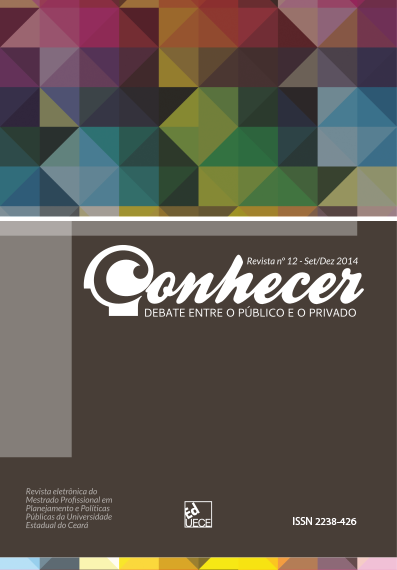O Abandono Escolar no Ensino Médio Estadual na Região do Grande Bom Jardim
Parole chiave:
Abandono, Escola, Educação públicaAbstract
O abandono escolar é definido como um dos indicadores de movimentação do INEP, que se refere aos alunos que deixaram de frequentar a escola antes de terminar o ano letivo, não tendo sido formalmente comunicada a sua transferência. Seus reflexos na educação pública brasileira no Ensino Médio atingem percentuais que necessitam gerar reflexões de combate à problemática. No Estado do Ceará, tal problema existe com maior ênfase na sua capital Fortaleza, e nesta metrópole, escolheu-se o Grande Bom Jardim como área de estudo, tendo uma unidade de caso no trabalho, o Centro de Atenção Integrada a Criança e ao Adolescente (CAIC) Maria Alves Carioca. Para tanto, a pesquisa desenvolveu-se no ano de 2014, tendo como objetivo compreender o abandono escolar no Ensino Médio na região do Grande Bom Jardim, realizando um estudo de caso no CAIC Maria Alves Carioca. Com isso, o trabalho apresentou reflexões sobre o abandono escolar através de categorias reveladas nas entrevistas durante o processo, obtidas através de métodos aplicados por: Gil (2010), Husserl (1992) e Yin (2001). No referente à parte teórica, utilizamos pensadores que escrevem sobre política, políticas públicas e políticas públicas de educação como: Arendt (2012) e Secchi (2013), assim como, autores que foram surgindo de acordo com as categorias encontradas nas entrevistas de nossos respondentes, onde dentre estes temos: Fox (apud CUNHA; COSTA, 2009), Macambira e Andrade (2013). Utilizou-se também diversos sites, e documentos oficiais para fundamentar a pesquisa, por se tratar de um trabalho em políticas públicas. Os resultados encontrados neste trabalho nos levaram a possibilidades de discussões sobre do abandono escolar, que envolvem as variáveis que consideramos pontos chaves da pesquisa e atreladas a elas, uma discussão curricular para servir de instrumento na permanência de alunos nas escolas, onde se criem disciplinas que atuem também nas questões sociais reveladas nesta pesquisa, assim como, uma aproximação da escola junto às pessoas da comunidade de seu entorno.
Downloads
##submission.downloads##
Pubblicato
Come citare
Fascicolo
Sezione
Licenza
Autores que publicam nesta revista concordam com os seguintes termos:
Autores mantém os direitos autorais e concedem à revista o direito de primeira publicação, com o trabalho simultaneamente licenciado sob a Licença Creative Commons Attribution que permite o compartilhamento do trabalho com reconhecimento da autoria e publicação inicial nesta revista.




